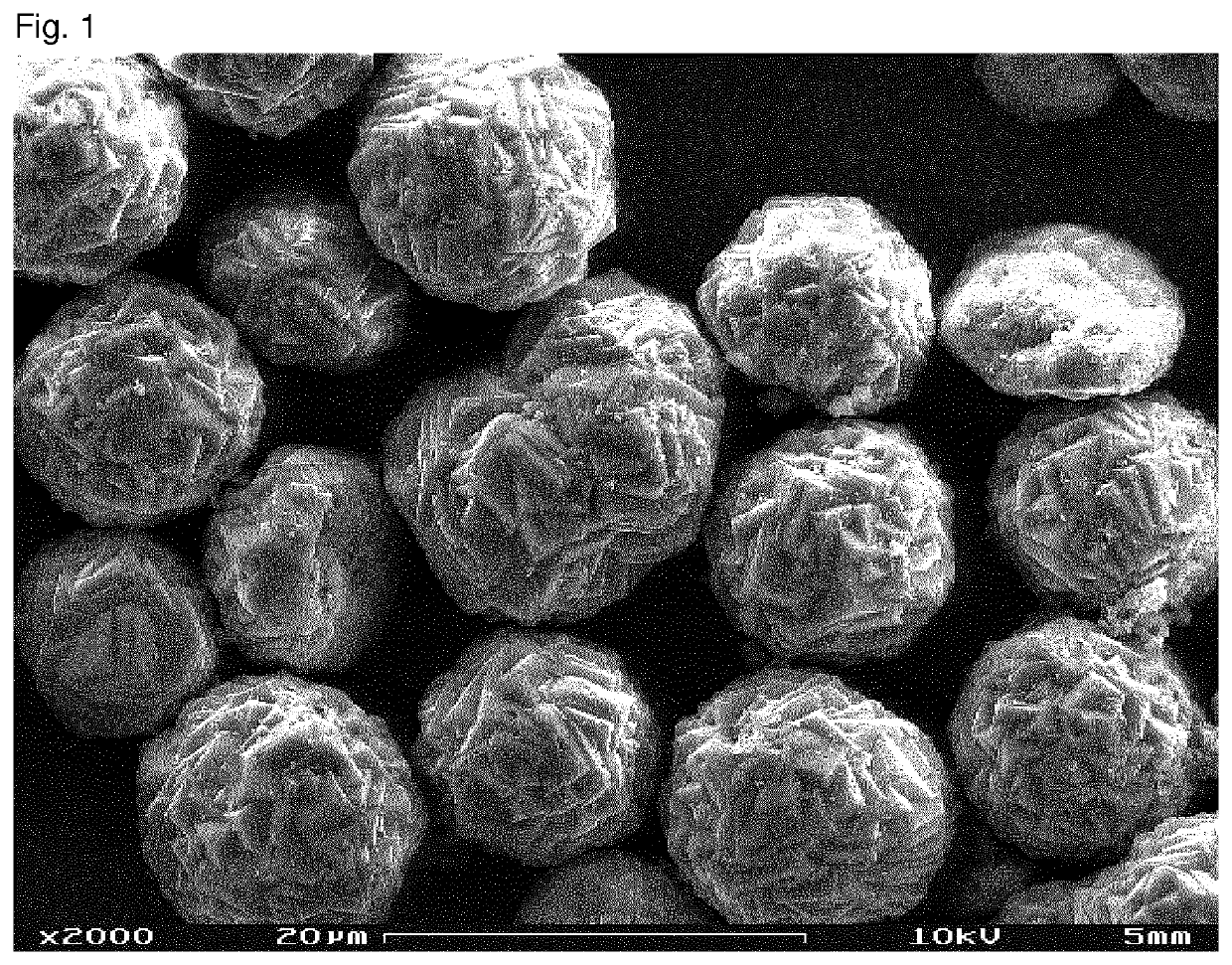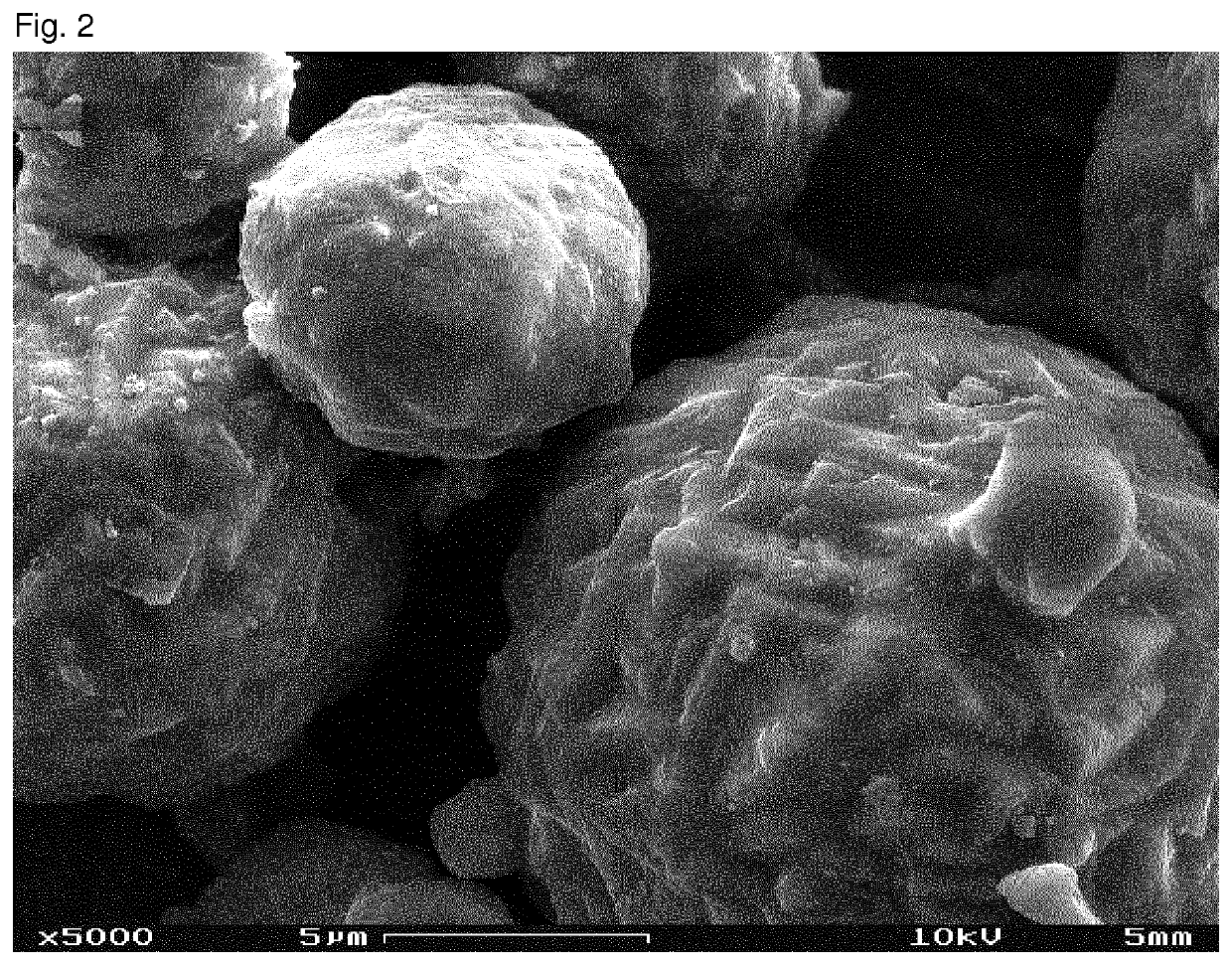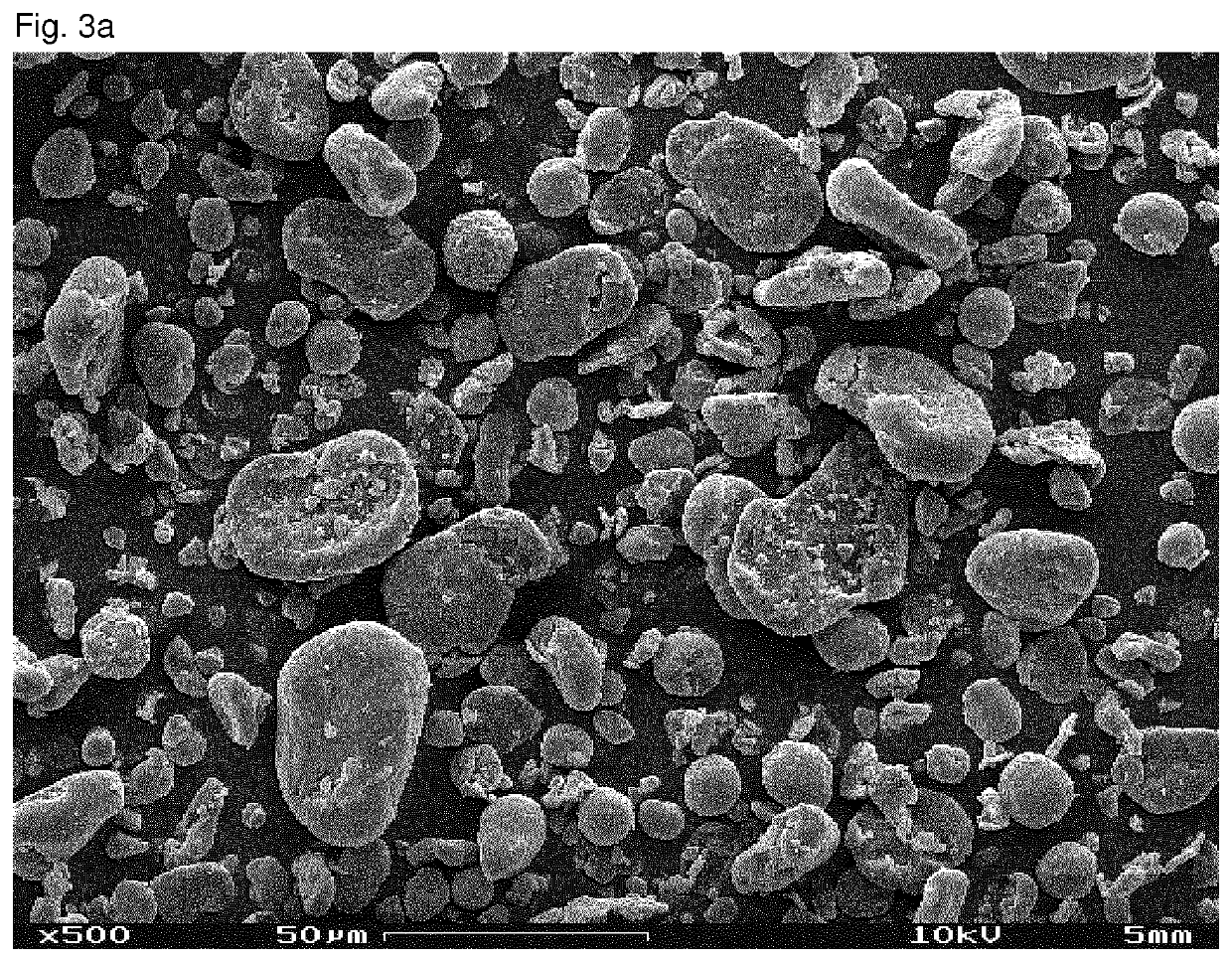Composite powder containing calcium carbonate and having microstructured particles
a calcium carbonate and composite powder technology, applied in the direction of drug compositions, chemistry apparatus and processes, prosthesis, etc., can solve the problems of poor pourability, inconvenient addition of pouring aids, and large size effects, etc., to achieve high component density and strength, high strength, and rapid and economical production
- Summary
- Abstract
- Description
- Claims
- Application Information
AI Technical Summary
Benefits of technology
Problems solved by technology
Method used
Image
Examples
example 1 (
REACTANT FOR COMPOSITE POWDER ACCORDING TO THE CLAIMED INVENTION)
[0337]At a starting temperature of 10° C., a CO2 gas mixture containing 20% CO2 and 80% N2 was introduced into a 4 L calcium hydroxide suspension having a concentration of 75 g / L CaO. The gas flow rate was 300 L / h. The reaction mixture was stirred at 350 rpm and the reaction heat was dissipated during the reaction. Upon an abrupt drop in the conductance (drop of more than 0.5 mS / cm / min and decrease in the conductance by more than 0.25 mS / cm within 30 seconds), 0.7% aminotris(methylenephosphonic acid), based on CaO (as theoretical reference value), is added to the suspension. The reaction to yield the sphere-shaped calcium carbonate particles was completed when the reaction mixture was quantitatively carbonated to yield sphere-shaped calcium carbonate particles, the reaction mixture having then a pH between 7 and 9. In the present case, the reaction was completed after approximately 2 h and the reaction mixture had a pH...
example 2 (
REACTANT FOR COMPOSITE POWDER ACCORDING TO THE CLAIMED INVENTION)
[0339]500 mL of demineralized water were initially charged in a 1000 mL beaker. 125 g of sphere-shaped calcium carbonate particles as per Example 1 were added under stirring and the resultant mixture was stirred for 5 min. 37.5 g of a 10% sodium metaphosphate (NaPO3)n solution were added slowly and the resultant mixture was stirred for 10 min. 75.0 g of 10% phosphoric acid were added slowly and the resultant mixture was stirred for 20 h. The precipitate is separated off and dried overnight at 130° C. in a drying cabinet. The resultant sphere-shaped calcium carbonate particles likewise had an average particle diameter of 12 μm.
[0340]An SEM image of the sphere-shaped calcium carbonate particles is presented in FIG. 2. A thin phosphate layer can be identified on the surface of the sphere-shaped calcium carbonate particles.
example 3 (
COMPOSITE POWDER ACCORDING TO THE CLAIMED INVENTION)
[0341]A composite powder composed of sphere-shaped calcium carbonate particles and a polylactide (PLLA) was produced following the method described in JP 62083029 A, using the instrument NHS-1. Cooling was carried out using 12° C. cold water. A polylactide granulate 1 and the sphere-shaped calcium carbonate particles from Example 1 were used as the mother particles and as the baby particles (filler), respectively.
[0342]39.5 g of polylactide granulate were mixed with 26.3 g of CaCO3 powder and filled at 6400 rpm. The rotor speed of the aggregate was adjusted to 6400 rpm (80 m / s) and the metered materials were processed for 10 min. The maximally reached temperature in the grinding space of the NHS-1 was 35° C. Altogether 7 repeats with the same amounts of material and same machine settings were carried out. Altogether 449 g of composite powder were obtained. The composite powder obtained was manually dry-sieved through a 250 μm sieve...
PUM
| Property | Measurement | Unit |
|---|---|---|
| particle diameter | aaaaa | aaaaa |
| diameter | aaaaa | aaaaa |
| particle size d50 | aaaaa | aaaaa |
Abstract
Description
Claims
Application Information
 Login to View More
Login to View More - R&D
- Intellectual Property
- Life Sciences
- Materials
- Tech Scout
- Unparalleled Data Quality
- Higher Quality Content
- 60% Fewer Hallucinations
Browse by: Latest US Patents, China's latest patents, Technical Efficacy Thesaurus, Application Domain, Technology Topic, Popular Technical Reports.
© 2025 PatSnap. All rights reserved.Legal|Privacy policy|Modern Slavery Act Transparency Statement|Sitemap|About US| Contact US: help@patsnap.com



